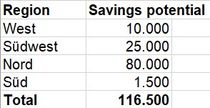Join us at the 2025 Microsoft Fabric Community Conference
Microsoft Fabric Community Conference 2025, March 31 - April 2, Las Vegas, Nevada. Use code MSCUST for a $150 discount.
Register now- Power BI forums
- Get Help with Power BI
- Desktop
- Service
- Report Server
- Power Query
- Mobile Apps
- Developer
- DAX Commands and Tips
- Custom Visuals Development Discussion
- Health and Life Sciences
- Power BI Spanish forums
- Translated Spanish Desktop
- Training and Consulting
- Instructor Led Training
- Dashboard in a Day for Women, by Women
- Galleries
- Webinars and Video Gallery
- Data Stories Gallery
- Themes Gallery
- Contests Gallery
- Quick Measures Gallery
- R Script Showcase
- COVID-19 Data Stories Gallery
- Community Connections & How-To Videos
- 2021 MSBizAppsSummit Gallery
- 2020 MSBizAppsSummit Gallery
- 2019 MSBizAppsSummit Gallery
- Events
- Ideas
- Custom Visuals Ideas
- Issues
- Issues
- Events
- Upcoming Events
The Power BI DataViz World Championships are on! With four chances to enter, you could win a spot in the LIVE Grand Finale in Las Vegas. Show off your skills.
- Power BI forums
- Forums
- Get Help with Power BI
- Desktop
- Wrong or incorrect total sums / problem with aggre...
- Subscribe to RSS Feed
- Mark Topic as New
- Mark Topic as Read
- Float this Topic for Current User
- Bookmark
- Subscribe
- Printer Friendly Page
- Mark as New
- Bookmark
- Subscribe
- Mute
- Subscribe to RSS Feed
- Permalink
- Report Inappropriate Content
Wrong or incorrect total sums / problem with aggregation of data
Hi guys,
my company is buying some of our raw materials on the Spotmarket and some orders are getting bundled and bought on the Forecast market.
Needless to say, bundling and buying on the Forecast market is cheaper, so I'd like to show the saving potential if 100% is bought through Forecasts for different regions / different companies and so on for different raw materials (see column "Code" in my Screenshots).
Unfortunately as this is company data, I can't post the pbix file.
I have a data table - call it "Items" - that looks like this:
And what I want to show is something like this:
--> As I mentioned I also have a slicer with different raw material codes like H01, H02, S01, O01,...
The user should be able to see the savings for one or multiple codes selected at once.
My first approach was to build a measure like this:
Savings_potential =
VAR Avg_FC_price =
CALCULATE(
SUM(items[Total]) / SUM(items[Quantity]),
Items[FC / Spot] == "FC")
VAR Avg_SP_price =
CALCULATE(
SUM(items[Total]) / SUM(items[Quantity]),
Items[FC / Spot] == "Spot")
VAR Quantity_Spot =
CALCULATE(
SUM(Items[Quantity]),
Items[FC / Spot] == "Spot")
RETURN (Avg_SP_price - Avg_FC_price) * Quantity_Spot
Now I have the following problems:
- Incorrect totals - what I want is just the sum of all entries of the list. My formula calculates Avg_SP_price and Avg_FC_price for all Regions (or whatever grouping) at once and multiplies by quantity and that's not the same as adding up all values for the regions. I have seen some videos and comments about this topic but I can't apply the solutions in my case here.
- Basically same issue when I'm selecting multiple Codes - what my formula should do is calculate each saving and adding it up - whereas my formula calculates the average prices for multiple categories at once which is not what I wanted.
Now I thought about the following:
- Creating a new intermediate table, where I calculate all possibilities like the following and use the columns "Region" and "Saving" for my actual report. I'm stuck on how to create a table that changes dynamically the calulated values like the column Avg_FC_Price and so on when I change the Date slicer in report. Is that even possible?
- Using a for loop would be nice. But don't know how. I saw some posts with sumx and earlier, but don't know how to apply it to my issue as I think that would require creating a new table, and then again I can't apply the Date slicer.
- Go with the python integration (but as I read, daily refreshing would only work with a gateway in personal mode, so not an option)
Simple problem, but I'm just stuck and have no idea how to continue. Help very much appreciated 🙂
Thanks and best regards
Solved! Go to Solution.
- Mark as New
- Bookmark
- Subscribe
- Mute
- Subscribe to RSS Feed
- Permalink
- Report Inappropriate Content
@Anonymous , You need to create a new measure like
new Savings_potential= sumx(summarize(Table, Table[region], Table[Code],"_1",[Savings_potential]),[_1])
A*B should always be a column of row-level calculation(in Measure). If not we need to force a context
also refer:https://www.youtube.com/watch?v=ufHOOLdi_jk
- Mark as New
- Bookmark
- Subscribe
- Mute
- Subscribe to RSS Feed
- Permalink
- Report Inappropriate Content
Hi @Anonymous ,
Calculated table or dimension table cant be dynamic,if you hope it to be dynamic,try a measure table,see below video:
https://www.youtube.com/watch?v=qaqyazlEce0
Best Regards,
Kelly
Did I answer your question? Mark my post as a solution!
- Mark as New
- Bookmark
- Subscribe
- Mute
- Subscribe to RSS Feed
- Permalink
- Report Inappropriate Content
@Anonymous , You need to create a new measure like
new Savings_potential= sumx(summarize(Table, Table[region], Table[Code],"_1",[Savings_potential]),[_1])
A*B should always be a column of row-level calculation(in Measure). If not we need to force a context
also refer:https://www.youtube.com/watch?v=ufHOOLdi_jk
- Mark as New
- Bookmark
- Subscribe
- Mute
- Subscribe to RSS Feed
- Permalink
- Report Inappropriate Content
Sorry for my late reply. I had to work on another project and just tried it out..
@amitchandak, This is exactly what I was looking for - works perfect. Thanks a lot!!




